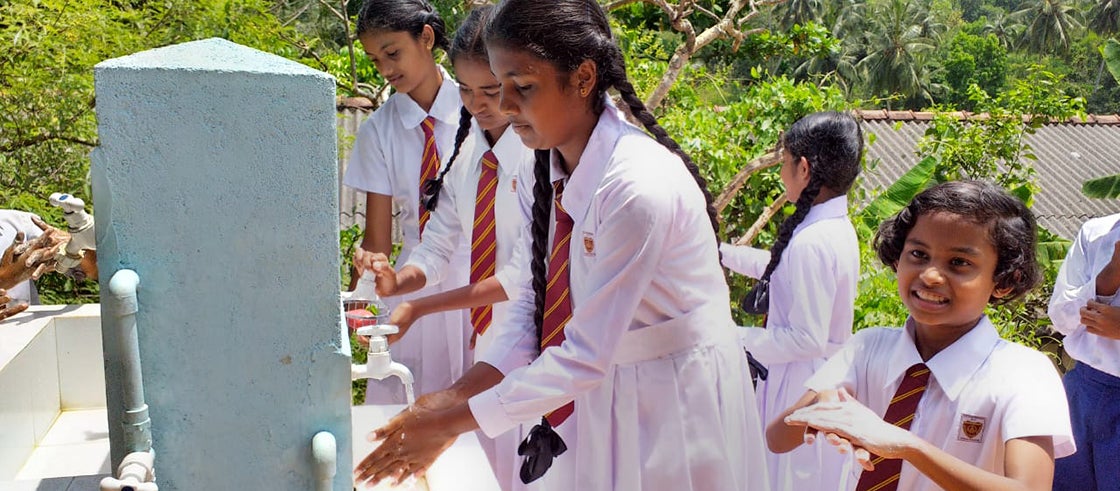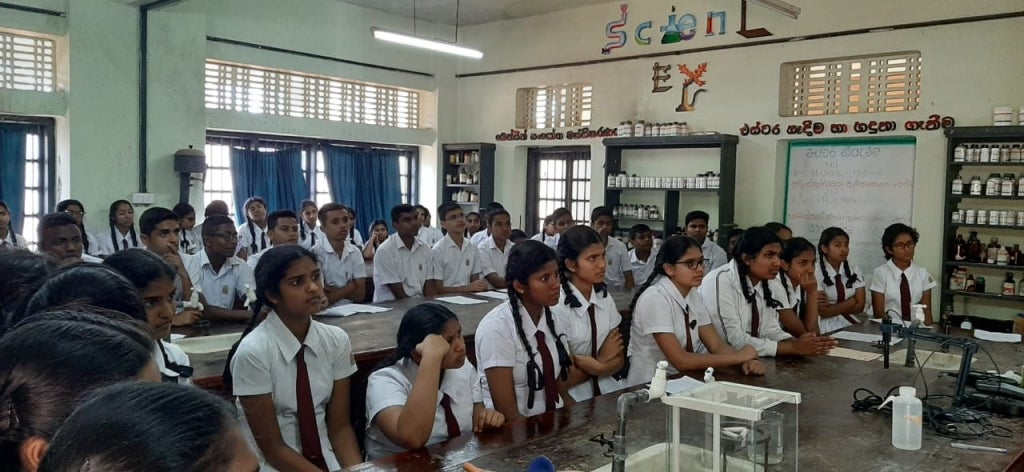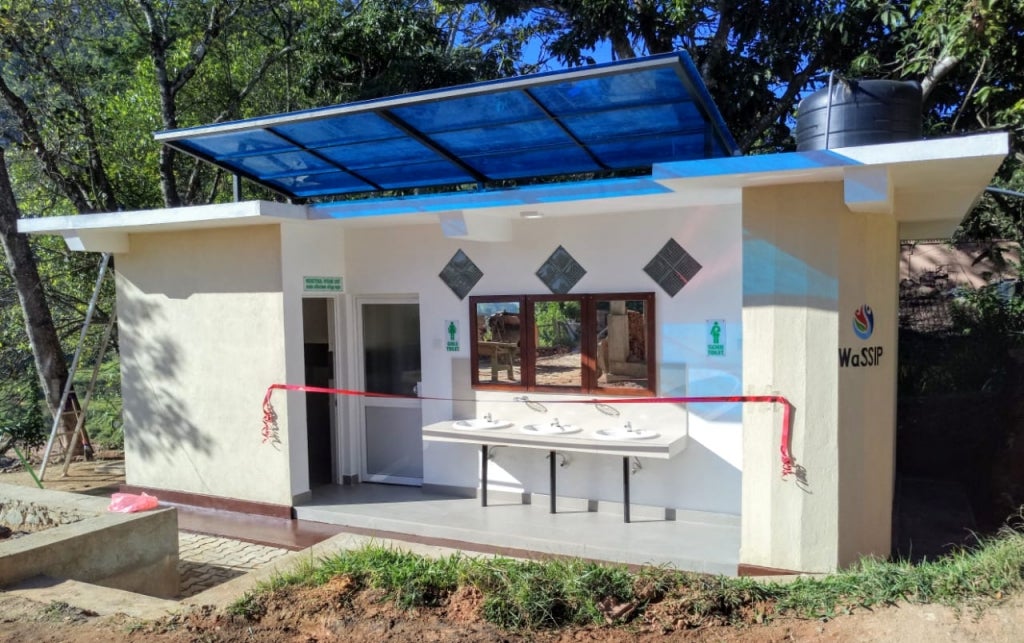 Students in Sri Lanka washing hands
Students in Sri Lanka washing hands
Think of the last time you went to the movies, a sporting venue, or any public place, and had to use a restroom. Did you notice that the queues for the women’s restroom were generally longer than the men’s?
Most building codes provide for equal toilet areas for both men and women – in which case the men get more urinals in the same amount of space as the women - or for an equal number of toilets. However, because women take longer to use the restrooms for various reasons, including attending to menstrual hygiene, the speed of access to these spaces is anything but equal.
We listened to voices of diverse women, especially those in areas where poverty rates are high and access to water supply and sanitation is low.
To ensure that the Sri Lanka Water Supply and Sanitation Improvement Project (WASSIP) was inclusive, we listened to the voices of diverse women, especially those in the estate sector where poverty rates are high and access to water supply and sanitation is low.
Three clear areas of concern emerged which the project has sought to address.
1) Socially or economically marginalized women are more likely to be deprived of safe water and sanitation facilities
Even though 90 percent of Sri Lanka’s population has access to water, only 43 percent of those in the estate sector, which includes tea plantations, have such access.

Although both men and women living in the estates are affected, the women bear the brunt of this deprivation as they are responsible for fetching water, often with children in tow. One woman we talked to said, “It takes half a day if we go to the river to bathe and wash our clothes. Or else we have to travel by bus or three-wheeler to fetch water from Balangoda three kms away.” This regular chore is now more fraught with danger because it is tough to maintain physical distancing at water points.
Where women are the sole breadwinners, they are also less likely to have a private toilet at home. Shared toilets often do not offer the privacy the women need as they may not lock or have trash bins to dispose of menstrual waste.
To ensure that these women benefitted equally from our interventions, the project prioritizes female-headed households and other vulnerable groups in districts with high poverty and large estate populations, such as Badulla and Nuwara Eliya.
2) Adolescent girls are likely to have worse educational outcomes because schools lack provisions for menstrual hygiene
Although the vast majority of Sri Lanka’s schools have separate toilets for girls, a 2015 survey found that more than half of adolescent girls miss school when they have their period. Longstanding cultural taboos view menstrual blood as impure. In fact, a UN study found that 60 percent of teachers in Sri Lanka share this view. An interview with a school principal revealed that female students were discouraged from disposing of menstrual hygiene products in the school because of these taboos.

In the estate sector, adolescent girls drop out of school altogether when they attain puberty, highlighting how multiple vulnerabilities impact educational outcomes and the future economic productivity of the country.
The project is therefore building period-friendly toilets that include discreet waste disposal and incineration facilities for used menstrual hygiene products in eight schools, with efforts underway in 17 more. It also seeks to change collective thinking by raising awareness about menstrual hygiene among school managements, teachers, and students.
3) Women are less likely to be in leadership positions in the water sector and more likely to face social consequences if they are in such positions
Although community-based organizations and water user associations (WUAs), serving communities in rural and estate areas respectively, provide the space for employing women, they are usually excluded from leadership positions. This is because women do not enjoy the same social or economic status as the men who are seen as ‘natural leaders’.
The few women who do hold leadership posts tell us how their personal lives suffer, with their marriages often being delayed. One woman told us, “I decided to step down. I had put my personal life on hold for this. I wanted to get back to those things.”
To ensure that women’s voices are heard when community decisions are taken, the project mandates the participation of women in WUAs. A formal mentoring and support system will be encouraged for young women to take on and retain leadership posts, instead of feeling pressured to leave.
Although water user associations provide space for employing women, they are usually excluded from leadership positions.

Listening to the women talk about the importance of having running water and toilets at home highlighted how inclusion and gender equality are critical, not only for women’s empowerment but also for the country’s sustainable development because of their impact on health, education and the quality of life of people.
For further information:
Watch this video on WASSIP
WASSIP’s COVID response
Read The Rising Tide : A New Look at Water and Gender


Join the Conversation